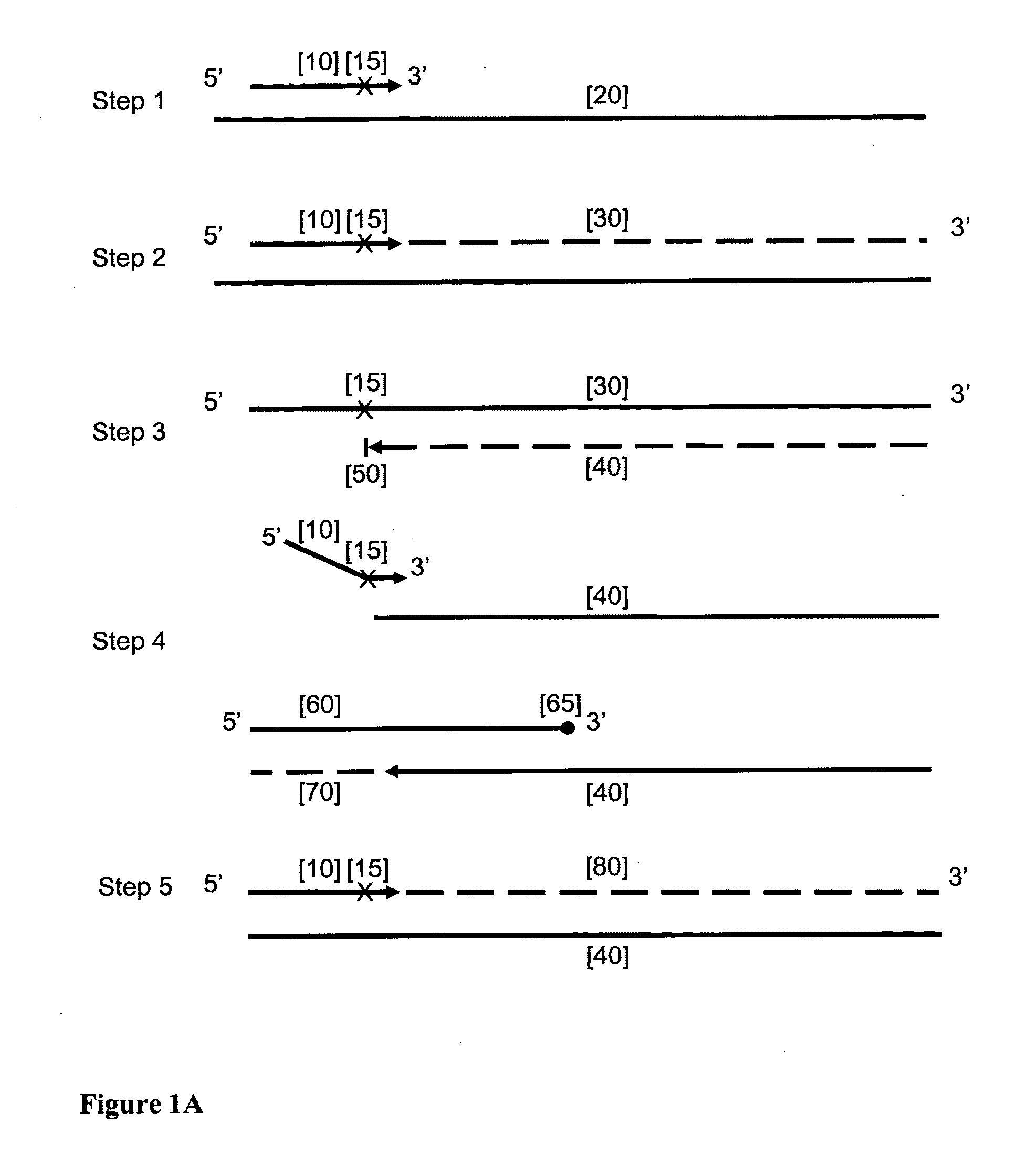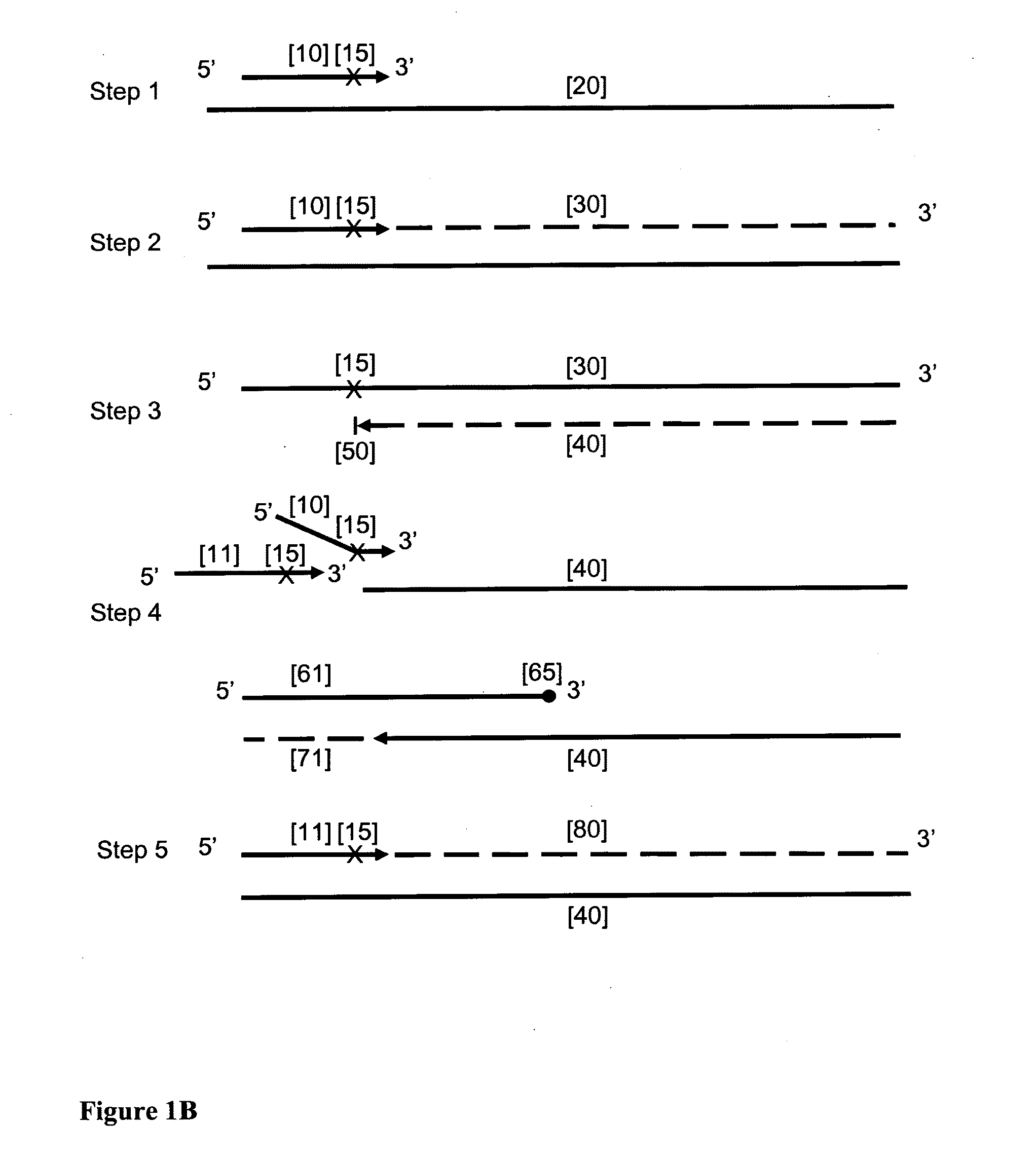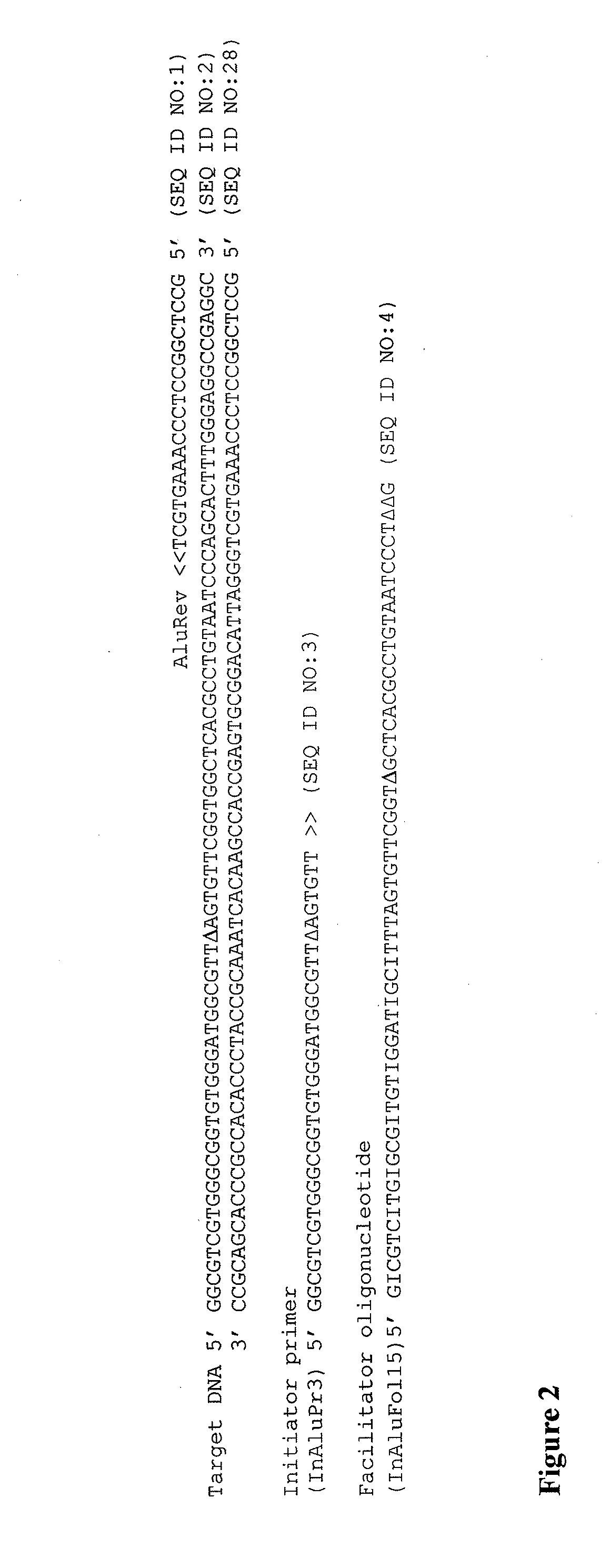Nucleic acid amplification
a nucleic acid and amplification technology, applied in the field of selective amplification, can solve the problems of compromising the selectivity and affecting the specificity of the technique, and affecting the specificity of the nucleic acid product, so as to reduce or eliminate the amplification of undesired non-target sequences and improve the specificity of the desired target sequen
- Summary
- Abstract
- Description
- Claims
- Application Information
AI Technical Summary
Benefits of technology
Problems solved by technology
Method used
Image
Examples
example 1
Dependency on Initiator Primer and Facilitator Oligonucleotide for Successful Amplification
[0113]This example demonstrates that the HDCR amplification technique in accordance with the embodiment of this invention depends upon the presence of both the initiator primer and the facilitator oligonucleotide.
[0114]HDCR was used to amplify a region of the human Alu repeat sequence as shown in FIG. 2. The effect of omitting either the initiator primer or facilitator oligonucleotide is shown. All reactions were done in duplicate. FIG. 2 shows the sequence of the target region, the initiator primer InAluPr3, the facilitator oligonucleotide InAluFol5 and the reverse primer AluRev. The initiator primer contains an abasic site and the 3′ end of the facilitator oligonucleotide contains two abasic sites and two mismatches within the target nucleic acid sequence (T / T mismatch and a G / T mismatch) to prevent it priming. The facilitator oligonucleotide also contains an additional abasic site to reduce...
example 2
Selective Amplification Using HDCR Methodology
[0116]This example demonstrates that it is possible to achieve selective amplification from nucleic acid templates differing by a single base pair. The central region of the sequence shown in FIG. 4 corresponds to part of the sequence of the v-raf murine sarcoma viral oncogene homolog B1 (BRAF) gene. The underlined bases show the position of the common oncogenic T to A mutation V600E (MUTB sequence) compared with the normal sequence (NORB). The outer sequences match the oligonucleotide primers used. As shown in FIG. 5, the forward initiator primer BRF2 contains an abasic site 7 bases from its 3′ end. The 3′ end of the facilitator oligonucleotide BFol3 contains 6 mismatches to the target DNA and is terminated by a dideoxy GTP to prevent its extension. The facilitator oligonucleotide contains a 19 base region adjacent to the BRF2 primer that matches exactly with the mutant sequence, but contains a single base mismatch to the normal BRAF se...
example 3
Selective Amplification and Improved Amplification Efficiency Using HDCR Methodology
[0119]This example demonstrates both the potential to use HDCR amplification for selective amplification of differentially methylated DNA after bisulphite treatment as well as the advantage of an intermediate heating step in the temperature cycling to improve the efficiency of the two step synthesis of the reverse strand. FIG. 7 shows different nucleic acid sequence templates which were prepared with central regions (underlined) that mimic sequences produced from bisulphite treatment of a region of the hMLH1 gene after bisulphite treatment. Both sequences are flanked by the same sequence for oligonucleotide primer binding. Template M mimics methylated DNA in which cytosines of CpG dinucleotides remain as C after bisulphite treatment. Template U mimics unmethylated DNA where all cytosines are converted to uracil (and subsequently T after amplification). Nucleic acid template was prepared by PCR and di...
PUM
 Login to View More
Login to View More Abstract
Description
Claims
Application Information
 Login to View More
Login to View More - R&D
- Intellectual Property
- Life Sciences
- Materials
- Tech Scout
- Unparalleled Data Quality
- Higher Quality Content
- 60% Fewer Hallucinations
Browse by: Latest US Patents, China's latest patents, Technical Efficacy Thesaurus, Application Domain, Technology Topic, Popular Technical Reports.
© 2025 PatSnap. All rights reserved.Legal|Privacy policy|Modern Slavery Act Transparency Statement|Sitemap|About US| Contact US: help@patsnap.com



